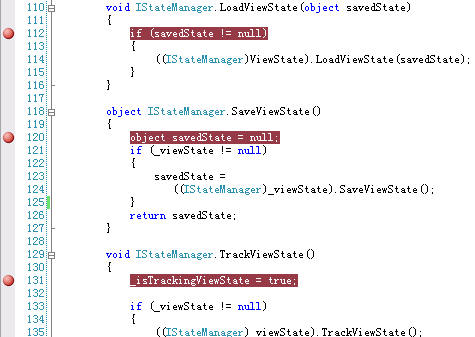ASP.NET中怎么为子控件添加样式,针对这个问题,这篇文章详细介绍了相对应的分析和解答,希望可以帮助更多想解决这个问题的小伙伴找到更简单易行的方法。
ASP.NET控件开发基础之为子控件添加样式2.复合控件中样式属性实现(为子控件提供样式)
Style类本身继承IStateManager 接口,并实现了接口方法.在第五篇我们曾重写CreateControlStyle方法,如下
protected override Style CreateControlStyle() { return new Style(ViewState); }其初始化的时候即存储样式信息在视图状态中,而其自定义的样式的状态管理机制则跟上一篇非常的相似.你需要重写Control类的状态管理的几个方法来实现样式的状态管理.还是以登录控件为例.
(1)先自定义样式集合属性
定义方法跟上一篇视图状态中的Address属性很相似
如下代码
#region 样式属性 [ Category("Styles"), DefaultValue(null), DesignerSerializationVisibility( DesignerSerializationVisibility.Content), PersistenceMode(PersistenceMode.InnerProperty), Description( "应用于按钮的样式") ] public virtual Style ButtonStyle { get { if (_buttonStyle == null) { _buttonStyle = new Style(); if (IsTrackingViewState) { ((IStateManager)_buttonStyle).TrackViewState(); } } return _buttonStyle; } } [ Category("Styles"), DefaultValue(null), DesignerSerializationVisibility( DesignerSerializationVisibility.Content), PersistenceMode(PersistenceMode.InnerProperty), Description( "应用于文本框的样式") ] public virtual Style TextBoxStyle { get { if (_textBoxStyle == null) { _textBoxStyle = new Style(); if (IsTrackingViewState) { ((IStateManager)_textBoxStyle).TrackViewState(); } } return _textBoxStyle; } } #endregion(2)自定义视图状态管理
因为此处定义了两个样式集合属性,所以用到了Triplet这个辅助类,其跟Pair类一样都是辅助类,而其可以存储三个相关对象的基本结构.如果你要储存三个以上就不能用这两个辅助类了,实现方法还是很简单的.
如下代码
#region 自定义视图状态 protected override void LoadViewState(object savedState) { if (savedState == null) { base.LoadViewState(null); return; } else { Triplet t = savedState as Triplet; if (t != null) { base.LoadViewState(t.First); if ((t.Second) != null) { ((IStateManager)ButtonStyle).LoadViewState(t.Second); } if ((t.Third) != null) { ((IStateManager)TextBoxStyle).LoadViewState(t.Third); } } else { throw new ArgumentException("Invalid view state ."); } } } protected override object SaveViewState() { object baseState = base.SaveViewState(); object buttonStyleState = null; object textBoxStyleState = null; if (_buttonStyle != null) { buttonStyleState = ((IStateManager)_buttonStyle).SaveViewState(); } if (_textBoxStyle != null) { textBoxStyleState = ((IStateManager)_textBoxStyle).SaveViewState(); } return new Triplet(baseState, buttonStyleState, textBoxStyleState); } protected override void TrackViewState() { base.TrackViewState(); if (_buttonStyle != null) { ((IStateManager)_buttonStyle).TrackViewState(); } if (_textBoxStyle != null) { ((IStateManager)_textBoxStyle).TrackViewState(); } } #endregion(3)为子控件添加样式集合属性
上面工作做好后,然后你就可以在呈现方法Render方法或RenderContent方法中为子控件添加样式集合属性,如下代码
if (_buttonStyle != null) { submitButton.ApplyStyle(ButtonStyle); } if (_textBoxStyle != null) { nameTextBox.ApplyStyle(TextBoxStyle); emailTextBox.ApplyStyle(TextBoxStyle); }来看一下效果,属性面板已经有子控件样式集合属性了,这样就更容易管理样式了.

定义子控件样式就这么的简单,主要难点还是在于自定义视图状态管理,对自定义视图状态管理熟悉的话,看到这里肯定很简单,如果没看明白就须先弄懂如何自定义视图状态管理.
关于ASP.NET中怎么为子控件添加样式问题的解答就分享到这里了,希望以上内容可以对大家有一定的帮助,如果你还有很多疑惑没有解开,可以关注亿速云行业资讯频道了解更多相关知识。
免责声明:本站发布的内容(图片、视频和文字)以原创、转载和分享为主,文章观点不代表本网站立场,如果涉及侵权请联系站长邮箱:is@yisu.com进行举报,并提供相关证据,一经查实,将立刻删除涉嫌侵权内容。